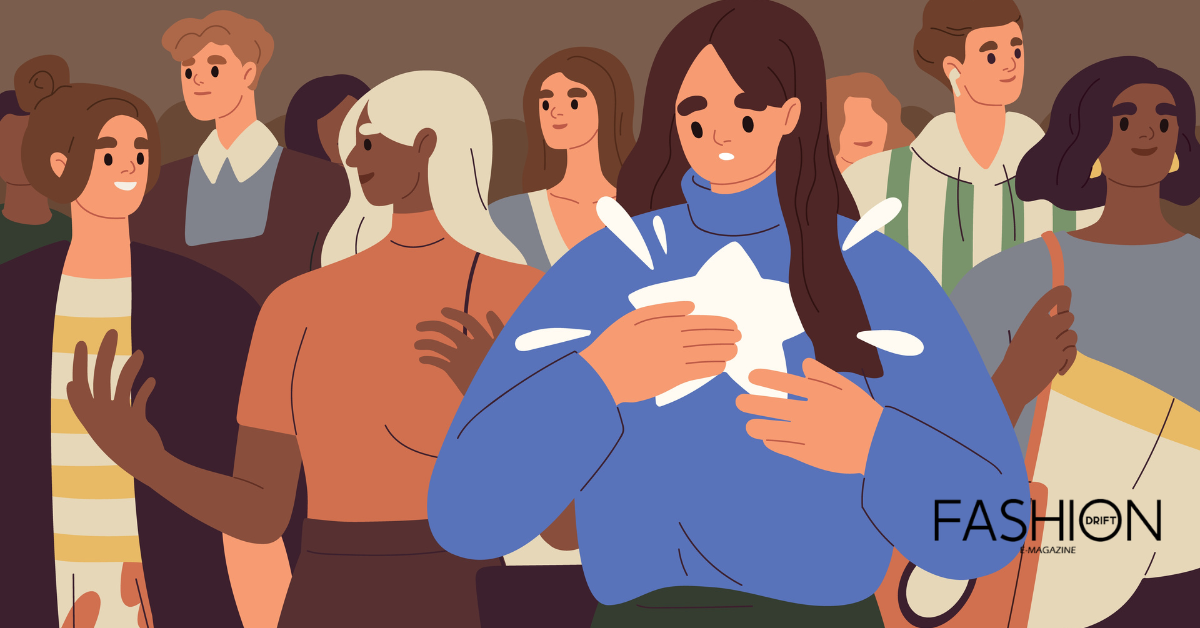
Fashion is everywhere. It’s not just about clothes; it’s a powerful force that shapes our world in many ways. From the way we dress to how we express ourselves, fashion has a huge influence on our lives.
Overview of Fashion’s Influence
Fashion Influence on Daily Life, our culture, and even our economy. Think about the clothes you wear. They are more than just fabric and threads; they tell a story. Your outfit can show your personality, your mood, or even your beliefs. Fashion also brings people together, creating communities and trends that spread around the world.
In culture, fashion plays a key role. Different styles and trends reflect the times we live in. For example, the bold, bright colors of the 1980s show the fun and adventurous spirit of that decade. Today, fashion continues to evolve, reflecting our current values and technologies.
Surprising Fashion Facts: Beyond its influence on style, fashion significantly impacts the global economy by supporting millions of jobs worldwide. From fashion designers to retail staff, countless livelihoods are intertwined with this dynamic industry. Moreover, fashion serves as a catalyst for innovation, continually introducing new fabrics, cutting-edge designs, and revolutionary technologies that shape our everyday lives.
Importance of Understanding Fashion’s Impact
Impact of Fashion on Lifestyle is profound and far-reaching, shaping personal identities, societal norms, and economic trends globally. Fashion influences cultural expression and creativity, enriching how individuals perceive themselves and interact with others. Understanding these dynamics deepens appreciation for diversity and highlights fashion’s pivotal role in shaping modern lifestyles.
Understanding fashion’s impact is important for several reasons. First, it helps us make informed choices about what we wear. Knowing the story behind our clothes can make us more mindful consumers. We can choose brands that align with our values, whether that’s supporting ethical labor practices or opting for sustainable materials.
Understanding fashion helps us appreciate its role in culture. By recognizing the messages and meanings behind different styles, we can better understand ourselves and the world around us. Fashion is a form of communication, and by decoding it, we can learn a lot about society.
Finally, being aware of fashion’s economic influence can guide us in making decisions that support fair trade and sustainability. By supporting brands and practices that are good for people and the planet, we can help create a better future.
Fashion is a powerful tool that affects many aspects of our lives. By understanding its influence, we can make better choices, appreciate cultural diversity, and support a healthy economy. Fashion is not just about looking good; it’s about making a difference.
Historical Perspective: Evolution of Fashion Through the Ages
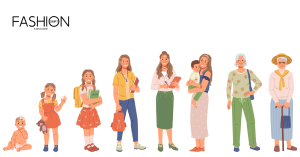
Fashion has always been a reflection of the times, showcasing changes in society, culture, and technology. From ancient civilizations to the modern era, fashion has evolved significantly, marking key milestones that have shaped how we dress today.
Ancient Civilizations
In ancient Egypt, fashion was a sign of status and wealth. The Egyptians wore linen clothing, with elaborate jewelry and headpieces. Similarly, in ancient Greece and Rome, clothing styles such as togas and chitons were popular, made from simple fabrics but draped in elegant ways.
The Middle Ages
During the Middle Ages, fashion in Europe was heavily influenced by the feudal system. Nobility wore luxurious fabrics like silk and velvet, adorned with fur and intricate embroidery. The common people, however, wore simpler, practical clothing made from wool and linen.
The Renaissance
The Renaissance era brought a renewed interest in art and culture, which was reflected in fashion. Clothing became more elaborate, with rich fabrics, vibrant colors, and detailed embellishments. This period also saw the introduction of the corset and the rise of tailored clothing.
The 18th Century
The 18th century was a time of opulence and extravagance in fashion. In France, the court of Louis XVI set trends with elaborate gowns, powdered wigs, and luxurious accessories. Meanwhile, the Industrial Revolution began to change how clothes were made, introducing new fabrics and mass production techniques.
The 19th Century
The 19th century saw significant changes in fashion, with the Victorian era bringing modesty and decorum. Women wore corsets, hoop skirts, and high-necked dresses, while men’s fashion included tailored suits and top hats. Towards the end of the century, fashion began to relax, with simpler, more practical styles emerging.
The 20th Century
The 20th century was a time of rapid change and innovation in fashion. The 1920s flapper dresses symbolized the new freedom and liberation of women. The 1950s brought glamorous, hourglass silhouettes, while the 1960s introduced bold colors and psychedelic patterns. The 1980s were known for their eclectic styles, including power suits and punk fashion.
Modern Day
Today, fashion is more diverse and inclusive than ever. Trends come and go quickly, influenced by social media and global culture. Sustainable and ethical fashion has gained importance, with many designers focusing on eco-friendly practices. Streetwear, athleisure, and high fashion coexist, offering endless options for personal expression.
Key Milestones in Fashion History
- The Introduction of the Corset: The corset, first worn during the Renaissance, became a staple in women’s fashion for centuries, shaping the female silhouette.
- The Birth of Haute Couture: In the mid-19th century, Charles Frederick Worth established the first haute couture house in Paris, setting the standard for high fashion and custom-made clothing.
- The Flapper Era: The 1920s flapper dresses, with their shorter hemlines and loose silhouettes, represented a dramatic shift towards modern, liberated fashion.
- The New Look: In 1947, Christian Dior’s “New Look” collection revolutionized women’s fashion with its emphasis on a cinched waist and full skirt, symbolizing post-war femininity.
- The Rise of Streetwear: In the late 20th century, streetwear emerged from urban culture, blending casual, athletic, and high fashion elements to create a new style movement.
Fashion continues to evolve, reflecting changes in society and technology. By looking back at its history, we can appreciate the creativity and innovation that have shaped the way we dress today.
How Fashion Affects Mood
How Fashion Affects Us: Fashion goes beyond aesthetics; it influences our mood and self-expression. Our clothing choices can uplift spirits, boost confidence, and reflect our inner emotions.
Colors and Emotions
Colors have a powerful impact on our mood. For instance, wearing bright colors like yellow or orange can make you feel happy and energetic. On the other hand, darker colors like black or gray might make you feel more serious or even a bit down. This is because colors can trigger certain emotions and feelings.
Comfort and Happiness
Wearing clothes that are comfortable can boost your mood. If you’re comfortable, you’re likely to feel more relaxed and happy. On the contrary, wearing something too tight or itchy can make you feel annoyed and uncomfortable.
Style and Self-Esteem
When you wear an outfit that you love, it can boost your self-esteem. Feeling good about your appearance can make you feel more confident and ready to take on the day. This confidence can influence how you interact with others and how you handle different situations.
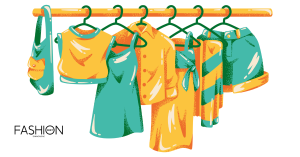
The Science Behind Fashion Choices
Psychological Theories
Several psychological theories explain why fashion affects us. One is the enclothed cognition theory, which suggests that what we wear can influence our thoughts and behaviors. For example, wearing professional attire might make you feel more competent and focused at work.
Cultural Influence
Fashion is also influenced by culture. Different cultures have unique styles and norms, which can affect how people feel about their clothing choices. Wearing traditional attire can give a sense of pride and connection to one’s heritage.
Social Interaction
Our fashion choices can affect how others perceive us. Dressing in a certain way can send a message about your personality or mood. For instance, wearing bold and unique styles might show that you’re confident and creative, while classic and simple outfits might convey that you’re dependable and grounded.
Fashion plays a significant role in our daily lives, influencing our mood and confidence. Understanding the psychological impact of what we wear can help us make choices that boost our well-being. So, next time you pick an outfit, remember that it’s not just about looking good—it’s about feeling good too.
Fashion and Social Dynamics
Fashion as a Social Indicator
- Status and Identity: Fashion often reflects a person’s social status and identity. What we wear can indicate our profession, age, and even social class. For instance, a business suit may suggest professionalism and authority.
- Cultural Expression: Fashion is a way to express cultural heritage and beliefs. Traditional clothing can highlight a person’s cultural background and values, making fashion a powerful tool for cultural expression.
- Economic Status: The brands and quality of clothing we choose can indicate our economic status. High-end designer brands often suggest wealth, while more affordable fashion may reflect a different economic reality.
- Social Groups: The way we dress can show our affiliation with certain social groups. For example, teenagers might dress similarly to their friends to fit in and show their connection to a particular group.
Trends and Peer Influence
- Peer Pressure: Our clothing choices are often influenced by those around us. Friends and peers can impact our fashion decisions, sometimes leading us to adopt certain trends to fit in.
- Social Media Influence: Platforms like Instagram and TikTok play a significant role in shaping fashion trends. Influencers and celebrities often set trends that their followers quickly adopt, spreading styles rapidly across different communities.
- Fashion Cycles: Trends come and go, often influenced by social dynamics. What is popular today might be out of style tomorrow, reflecting the ever-changing nature of social preferences.
- Community Trends: Different communities have unique fashion trends. Urban areas might favor more modern and edgy styles, while rural areas may lean towards practical and traditional clothing.
- Fashion as Communication: Our fashion choices communicate messages to those around us. Whether we realize it or not, our clothing can convey confidence, professionalism, creativity, and even rebellion.
Economic Influence of Fashion
The fashion industry holds significant power in the global economy. From high-end designer brands to everyday retail stores, fashion influences not just what people wear but also how money flows through the economy.
Fashion Industry’s Economic Power
The fashion industry is a massive contributor to the economy. It creates jobs, from designers and models to retail workers and marketers. Major fashion events like New York, Paris, and Milan fashion weeks attract tourists, boosting local economies. Moreover, fashion brands often set trends that drive consumer spending, further stimulating economic growth.
Fashion also impacts other industries. For example, the demand for raw materials like cotton, silk, and wool supports the agriculture and textile sectors. Technology plays a role too, with innovations in materials and online shopping changing how the industry operates and grows.

Consumer Spending on Fashion
Consumer spending on fashion is a key part of the economy. People buy clothes for various reasons, such as keeping up with trends, expressing personal style, or simply needing new items. This spending supports retailers and creates a ripple effect across different sectors.
Sales promotions, discounts, and seasonal collections encourage people to spend more. The rise of online shopping has made fashion more accessible, leading to increased sales. Even during economic downturns, fashion remains a priority for many, showing its strong influence on consumer behavior.
The fashion industry not only shapes how we dress but also drives economic activity. Its power is evident in job creation, consumer spending, and its impact on other industries. Understanding the economic influence of fashion helps appreciate its vital role in the global economy.
Environmental Impact
- Resource Consumption: Fashion production uses large amounts of water, energy, and raw materials. This can deplete natural resources and harm ecosystems.
- Pollution: The fashion industry is responsible for significant pollution, including chemical waste from textile production and dyeing processes, which contaminates water and soil.
- Waste Generation: Clothing waste is a major issue, with many garments ending up in landfills where they can take years to decompose, releasing harmful chemicals into the environment.
Sustainable Fashion Trends
- Eco-Friendly Materials: Sustainable fashion uses materials like organic cotton, recycled fabrics, and biodegradable fibers to reduce environmental harm.
- Slow Fashion Movement: Emphasizes quality over quantity, encouraging consumers to buy fewer, but better-made, items that last longer.
- Upcycling and Recycling: Designers and brands are creating new pieces from old garments and recycled materials, reducing waste and promoting a circular economy.
- Ethical Production: Focuses on fair labor practices, ensuring that workers are paid fair wages and work in safe conditions.
The Cost of Fast Fashion
- Environmental Degradation: Fast fashion’s rapid production cycle leads to overuse of resources and high levels of waste and pollution.
- Poor Labor Practices: Fast fashion often relies on low-cost labor in developing countries, where workers may face poor working conditions and unfair wages.
- Consumerism and Waste: Fast fashion encourages a throwaway culture, with consumers buying more clothes than they need and discarding them quickly, contributing to waste and environmental harm.
- Hidden Costs: While fast fashion items are cheap, the hidden costs include environmental damage and social issues that impact communities globally.
Fashion and Technology

The fashion industry has always embraced change, but the impact of technology is pushing it to new heights. From design to shopping, tech innovations are reshaping how we experience fashion. With new tools and methods, designers can create unique pieces, and customers can shop more conveniently.
Innovations in Fashion Tech
One major innovation is 3D printing, which allows designers to craft intricate and custom pieces quickly. This technology not only saves time but also reduces waste, making it more sustainable. Smart fabrics are another breakthrough, embedding sensors into clothing to monitor health or adjust temperature. Additionally, virtual reality (VR) is transforming the shopping experience. Customers can now try on clothes virtually, ensuring a better fit before buying.
Future Trends in Fashion Technology
Looking ahead, we can expect even more exciting developments. Wearable technology will continue to evolve, integrating more seamlessly into our daily lives. Clothes might soon charge our devices or change colors based on our mood. The rise of artificial intelligence (AI) will also play a big role, with AI helping to predict trends and personalize shopping experiences. These advancements promise to make fashion more interactive, personalized, and sustainable in the future.
Fashion in Media and Pop Culture
Fashion’s Role in Movies and Music:
- Costume Design as Character Development: In movies, fashion isn’t just about clothes; it’s a tool for developing characters. The outfits actors wear can tell us about their personalities, social status, and even their journey throughout the film.
- Setting Trends and Styles: Movies and music videos often set trends that influence fashion choices globally. Iconic outfits from films like “Breakfast at Tiffany’s” or music videos like Madonna’s “Like a Prayer” have inspired fashion trends for decades.
- Cultural Representation: Fashion in media reflects cultural values and historical periods. Period films use clothing to transport viewers to different eras, while modern movies showcase contemporary styles that resonate with current fashion trends.
- Promotion and Brand Collaboration: Fashion brands often collaborate with movies and music videos to promote their clothing lines. These partnerships can elevate both the film’s aesthetics and the brand’s visibility.
Influencers and Fashion Icons:
- Shaping Trends: Influencers and fashion icons have immense influence over trends due to their large followings and aspirational lifestyles. What they wear in public or post on social media can spark immediate interest in certain styles or brands.
- Cross-Pollination with Brands: Fashion icons often collaborate with brands to create exclusive collections or endorse products. Their endorsement can significantly boost a brand’s reputation and sales.
- Personal Style as a Statement: Influencers and icons use their personal style to express individuality and make statements about social issues. Their fashion choices can become symbols of empowerment, rebellion, or cultural change.
- Digital Age Influence: Social media platforms like Instagram and TikTok have democratized fashion influence, allowing new voices and styles to emerge outside of traditional media channels.
Global Fashion Trends
- Regional Flair: Fashion varies greatly from region to region, reflecting local traditions, climate, and cultural values. For instance, traditional garments like the kimono in Japan or the saree in India are deeply rooted in their respective cultures.
- Western Influence: Western fashion, originating largely from Europe and North America, has had a profound global impact. Elements like denim jeans and tailored suits are now worn worldwide, blending with local styles.
- Emerging Markets: Countries like Brazil, China, and South Korea are becoming influential in global fashion. Their unique interpretations of trends and growing fashion industries contribute to a rich diversity in global style.
- Cross-Cultural Fusion: In today’s interconnected world, fashion often blends influences from different cultures. This fusion can be seen in haute couture collections that merge African prints with European cuts or streetwear that mixes elements of Japanese and American styles.
- Celebrity and Media: Celebrities and social media influencers play a crucial role in spreading global fashion trends. A dress worn by a Hollywood star or a viral TikTok video can instantly influence fashion choices worldwide.
- Environmental and Social Awareness: Increasingly, global fashion trends are shaped by concerns about sustainability and social responsibility. Consumers are demanding ethically sourced materials and transparent supply chains, influencing how brands approach design and production.
- Adaptation and Interpretation: While trends may start in fashion capitals like Paris or Milan, their adoption in different cultures often involves adaptation. Local designers and consumers interpret these trends to fit their own cultural contexts and personal styles.
- Future Directions: The future of global fashion trends seems to be more inclusive and diverse, with a growing emphasis on individual expression and sustainability. As digital platforms continue to connect fashion enthusiasts worldwide, the evolution of global style is set to accelerate.
Fashion serves as a universal language that speaks volumes about cultures worldwide. It goes beyond mere clothing choices, embodying histories, values, and aspirations of societies. From the intricate weaves of Indian textiles to the sleek lines of Scandinavian minimalism, every region contributes a unique flavor to the global fashion landscape. This diversity not only enriches our wardrobes but also fosters a deeper understanding and appreciation of cultural heritage. As fashion continues to evolve through cross-cultural exchanges and global connectivity, it reinforces the idea that style is a dynamic expression of identity and creativity across borders.
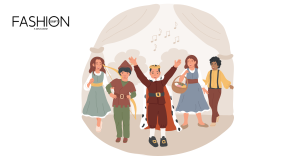


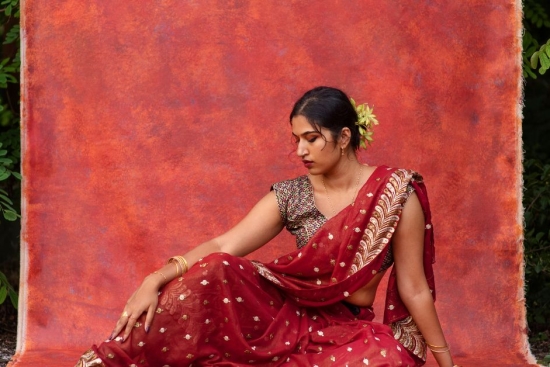




Comments (25)
Brianvoksays:
29/01/2025 at 15:29п»їFarmacia online migliore: migliori farmacie online 2024 – farmacia online piГ№ conveniente
top farmacia online
BradleyDotsays:
31/01/2025 at 08:26Farmacie on line spedizione gratuita: Farma Prodotti – farmacia online piГ№ conveniente
comprare farmaci online all’estero
ClintInicksays:
31/01/2025 at 08:43https://farmaprodotti.shop/# Farmacia online miglior prezzo
migliori farmacie online 2024
Brianplodssays:
31/01/2025 at 09:04Farmacia online miglior prezzo http://farmaprodotti.com/# comprare farmaci online all’estero
Farmacia online piГ№ conveniente
Patricksnubysays:
31/01/2025 at 11:35Gambling regulations are strictly enforced in casinos.: taya365 – taya365
Lannypersays:
31/01/2025 at 11:52The casino experience is memorable and unique.: taya777 – taya777 login
DavidAbonssays:
31/01/2025 at 12:03https://taya365.art/# Manila is home to many large casinos.
Many casinos provide shuttle services for guests.
Williamamushsays:
31/01/2025 at 15:42Casino promotions draw in new players frequently. http://taya365.art/# Casinos often host special holiday promotions.
DavidAbonssays:
31/01/2025 at 16:11https://winchile.pro/# Los jugadores pueden disfrutar desde casa.
Slot tournaments create friendly competitions among players.
Patricksnubysays:
31/01/2025 at 16:21Los casinos organizan eventos especiales regularmente.: winchile.pro – winchile
Lannypersays:
31/01/2025 at 16:35Las redes sociales promocionan eventos de casinos.: jugabet chile – jugabet chile
JosephLibsays:
31/01/2025 at 19:06phtaya casino [url=https://phtaya.tech/#]phtaya casino[/url] Live dealer games enhance the casino experience.
DavidAbonssays:
31/01/2025 at 20:15http://phmacao.life/# The gaming floors are always bustling with excitement.
Players often share tips and strategies.
Williamamushsays:
31/01/2025 at 20:41Live dealer games enhance the casino experience. https://winchile.pro/# Las apuestas deportivas tambiГ©n son populares.
Patricksnubysays:
31/01/2025 at 21:20Players often share tips and strategies.: taya777 register login – taya777
Lannypersays:
31/01/2025 at 21:28Some casinos have luxurious spa facilities.: taya777.icu – taya777 register login
DavidAbonssays:
01/02/2025 at 00:06http://jugabet.xyz/# Los jugadores deben conocer las reglas.
Some casinos feature themed gaming areas.
Williamamushsays:
01/02/2025 at 01:37The casino scene is constantly evolving. http://taya365.art/# Gambling regulations are strictly enforced in casinos.
Lannypersays:
01/02/2025 at 02:20Las apuestas mГnimas son accesibles para todos.: jugabet.xyz – jugabet chile
JosephLibsays:
01/02/2025 at 03:28jugabet casino [url=https://jugabet.xyz/#]jugabet[/url] Las promociones atraen nuevos jugadores diariamente.
DavidAbonssays:
01/02/2025 at 03:52http://taya777.icu/# The Philippines has several world-class integrated resorts.
Promotions are advertised through social media channels.
Williamamushsays:
01/02/2025 at 06:16Some casinos have luxurious spa facilities. http://taya777.icu/# Players must be at least 21 years old.
Patricksnubysays:
01/02/2025 at 06:51Los jugadores disfrutan del pГіker en lГnea.: jugabet.xyz – jugabet.xyz
Lannypersays:
01/02/2025 at 06:53Most casinos offer convenient transportation options.: taya365 – taya365 login
DavidAbonssays:
01/02/2025 at 07:22https://jugabet.xyz/# Los casinos son lugares de reuniГіn social.
A variety of gaming options cater to everyone.